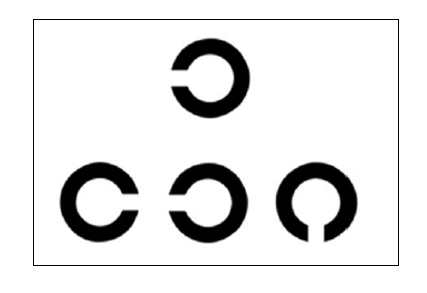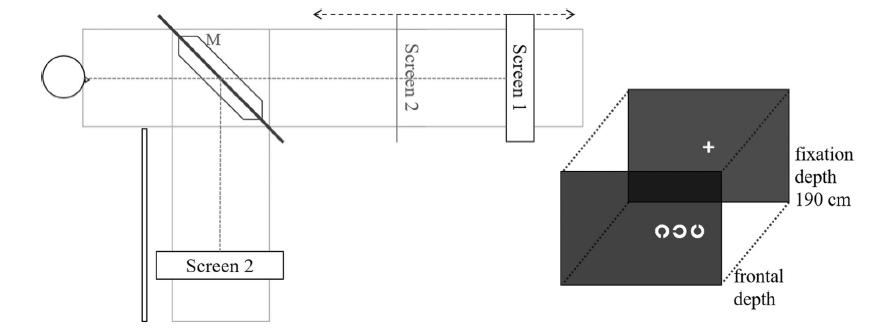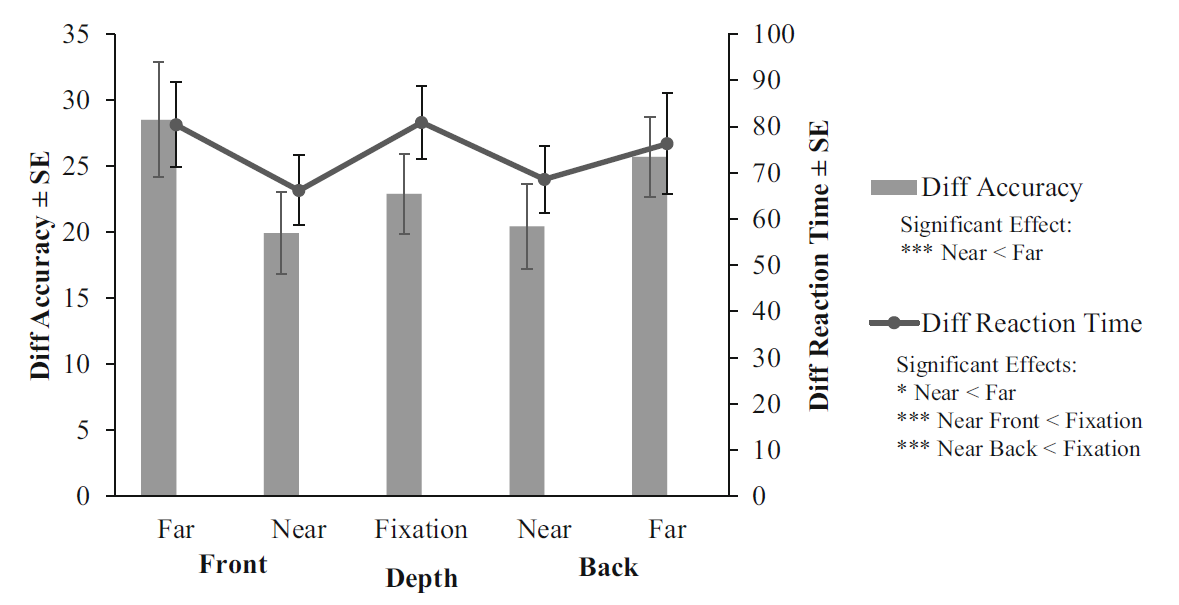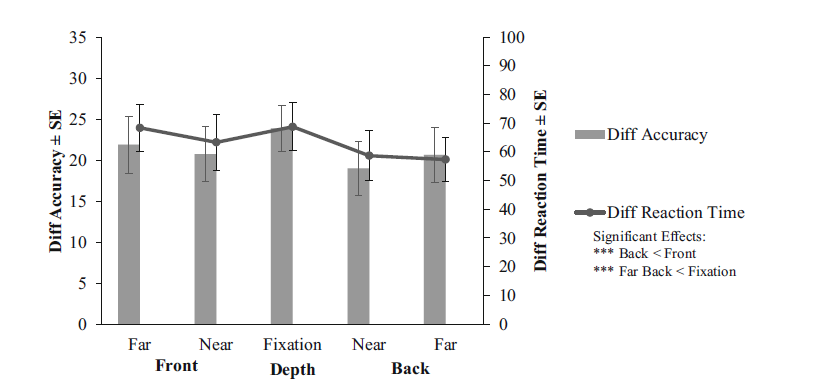We owe most of our visual acuity to the fovea, the central area of the retina that is most densely packed with receptors—around 150,000 cones per square millimetre. Whenever we focus on an object, we move our eyes so ensure that the image is projected onto the fovea. And we see whatever is there, irrespective of what else is there. That is, suppose your task is to detect which way a “PacMan” face is pointing. If the target is presented in the centre of your visual field, as in the figure below, then it does not matter whether other targets are surrounding it:

There is no “visual crowding” for stimuli presented centrally. Performance for the top row in the above figure would be (nearly) indistinguishable from performance for the bottom row, provided people are fixating on the central point where the PacMan target is presented.
Things are very different for peripherally presented targets, as in the figure below. Suppose you fixate at the central cross, the leftward facing PacMan is harder to recognize when presented with flankers (as in the right peripheral field) than in isolation (as in the left visual field).

This “visual crowding” effect has been observed for a broad range of stimuli, including letters, digits, faces, symbols, and Gabor patches.
To date, most studies examining crowding have focused on two-dimensional stimuli, such as in the above figures. These stimuli differ, however, from natural scenes in which most objects are distributed across three dimensions. Some objects are closer than others, and it is largely unknown how crowding operates when stimuli differ in depth.
A recent article in the Psychonomic Society’s journal Attention, Perception, & Psychophysics examined visual crowding in depth, under both binocular and monocular viewing conditions. Researchers Lisa Eberhardt and Anke Huckauf used an apparatus (shown below) in which stimuli could be displayed at two different distances from the participant but in the same line of sight.

By using a half-transparent mirror (M in the figure above), two screens could be projected into the observer’s line of sight. One screen (Screen 2) was projected to be at a constant distance and was used for fixation. The other screen (Screen 1) could be moved so it was either in front of or behind the fixation depth at various distances from the fixation plane.
The stimuli were PacMan faces (technically known as “Landolt rings”) and the participants’ task was to report the orientation of the target in a briefly-presented display. Across trials, targets were presented either in isolation or flanked, and this variable was fully crossed with visual field (left or right) and depth (in front of fixation plane, at fixation, or behind). The target could be pointing in any of the 4 cardinal directions on each trial. In addition, the overall distance to the stimuli and viewing condition (monocular vs. binocular) were manipulated across sessions. Altogether there were 4 sessions, each involving more than 1,000 trials.
Data analysis focused on the crowding effect, defined as the difference in performance for flanked and isolated presentation (for both accuracy and response times). The figure below shows the results for binocular viewing.

Any value greater than zero in the figure reflects a visual crowding effect—crowding was therefore clearly present at all distances and depths, although its extent differed significantly with distance. That is, referenced to the fixation depth, crowding effects were larger when the display was further away than when it was near the fixation depth. However, the direction of distance—that is, whether the stimuli were presented in front of or behind the fixation plane—was irrelevant. This clear pattern was present in both response times and accuracy, thus ruling out the possibility that speed-accuracy trade-offs might be responsible for the observed results. (Response times additionally showed an effect of moving away from the fixation plane as revealed by significant differences between the “near” conditions and the fixation condition, in which the stimuli were presented in the same plane as the fixation cross.)
The corresponding results for monocular viewing are shown in the next figure:

Contrary to the binocular data, the extent of visual did not depend on distance of the stimuli (near and far did not differ). This was also reflected in the response times, although response times indicated an effect of direction, with stimuli behind the fixation plane being processed faster than those in front.
What do these data tell us about visual crowding in depth?
Eberhardt and Huckauf explore several implications of their results. First, the absence of distance effects under monocular viewing suggests that their presence under binocular viewing is due to characteristics of disparity processing. Binocular disparity (the difference in image location of an object seen by the left and right eyes), is a powerful source of depth information. However, in the present experimental setup, in which the target stimuli were presented briefly (for only 20 ms), there was no time for people to adjust their focal depth away from the fixation point. In consequence, binocular vision may have given rise to diploplia (double-vision) at the far distances from the fixation plane. Double-vision, of course, doesn’t exactly help if you are trying to make out subtle features in a stimulus. Under monocular viewing conditions, no double-vision is possible and hence the far stimuli are processed with equal accuracy as the near stimuli.
Second, Eberhardt and Huckauf addressed the possible function of crowding in natural viewing. At first glance, crowding may appear to be a deleterious process: impoverished processing of a target brought about by nearby stimuli surely is a “bug” rather than a “feature” of the visual system? Eberhardt and Huckauf suggest that there is a flipside to this bug:
“Increased crowding, that is stronger clutter, with increased distance from fixation (irrespective of whether laterally or in depth) might reduce distraction by a stimulus-rich environment and preserve capacity for information processing at the focus.”
Your periphery’s crowding may facilitate your fovea’s focus.
Psychonomics article featured in this post:
Eberhardt, L. V., & Huckauf, A. (2019). Crowding in depth for binocular and monocular observation. Attention, Perception, & Psychophysics, 81, 1951-1961. DOI: 10.3758/s13414-019-01700-z.
